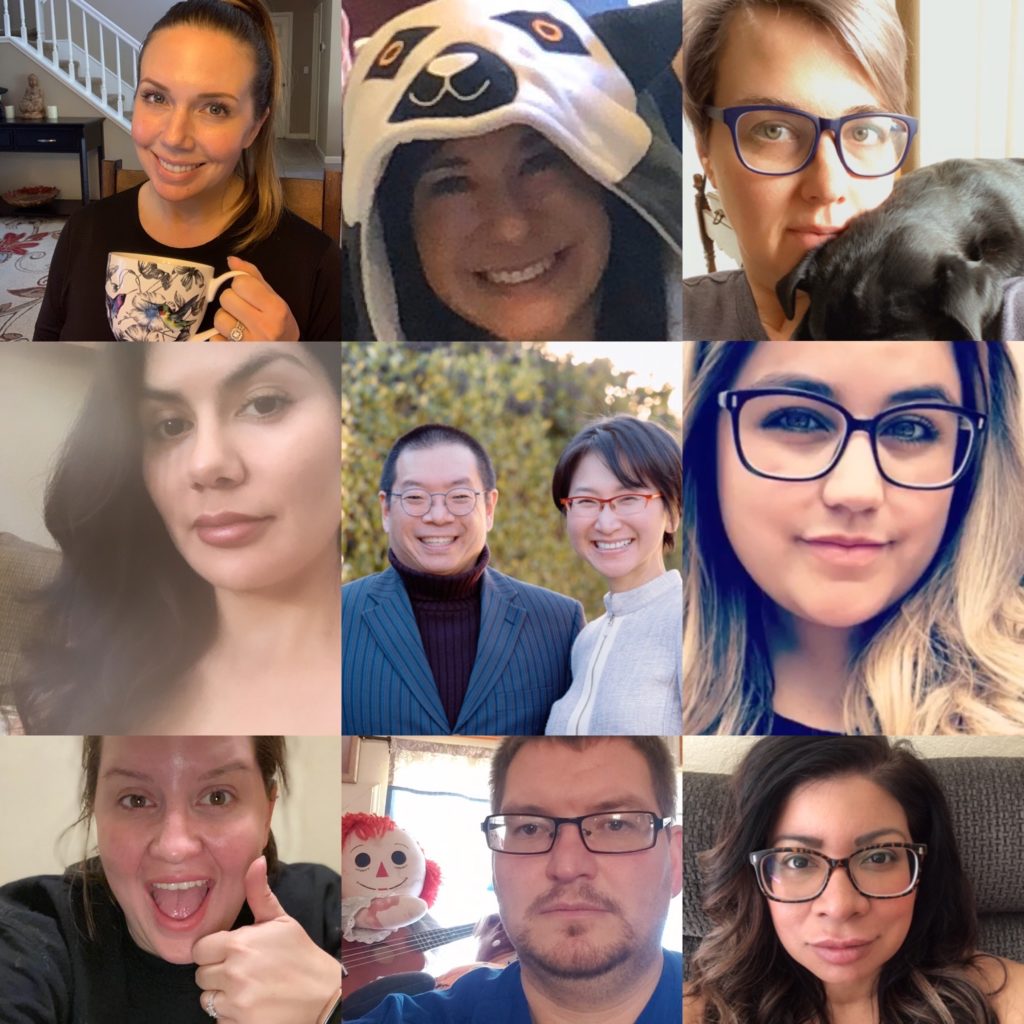Today, I had decided that I have had enough of this COVID craziness bringing us down, so I asked my Surgical Artistry team to come up with a list of things that make them happy.

Nikki’s LIST of what makes her happy:
Omg, came back to 40 texts, lol! Sorry- I had to go for a drive and get out. Things that I am doing during shut down to keep me sane and that make me happy-
1- Deep, intellectual conversations with my almost 14 year old daughter
2- Waking up at my normal time to keep my internal clock going
3- Decaf Irish Tea with Coconut Creamer in the morning
4- Making my plant based smoothies so I don’t turn into a buffalo during isolation
5- Staying busy and being productive with work so I feel like I’m earning my pay!
6- Gardening and cultivating my Japanese Maples– I have 6 seedlings that are thriving!
7- Baking cakes
8- Playing with my puppies and my kitty
9- meditation
10- singing
11- walks around my beautiful neighborhood
12- movies!!!
13- having time for self reflection and how I can be even better all around
14- video chats with my best friends and with my co-workers
15- Loud music whenever the heck I want!
16-Taking long lunches and eating whatever I want!!!
There’s much more but it’ll be too long, lol.
I miss you all
Shauna’s List:
During this crazy time, these are a few things that I wake up thankful for each day:
1. Spending way more time with my kiddo.
2. Archie, my pug.
3. Running and/or walking everyday with my daughter and pup.
4. Gardening.
5. Reading.
6. Spending more time in the kitchen.
7. Zoom-for allowing me to keep in touch with and able to see the faces of my friends and family. I grew up with my dad in the Navy. We didn’t have this technology when he was away. It could be 6 months before we saw him.
8. Music.
9. Knowing that I have some amazing friends that are out there doing incredible things. Nurses, grocery store employees, firefighters, and a VERY special seamstress who is donating her time and efforts to make masks for “the essentials”.
10. Getting caught up on my “to-do” list.
11. Having “me” time. I usually work 6 days a week, 60+ hours. So this has been crucial and not taken for granted.
12. The health of myself and my family.
13. Netflix and Disney +
14. Good wine.
Angelique’s List of of Happiness
Subject: Things that make me happy
1) Pad Tai makes me happy and I learned to make it!!! Lol
2) Lots of date nights with the Hubby
3) exercising
4) swimming
5) chocolate ??
6) being a mother to two great daughters.
7) being able to come into work although very little
8) my kitties that always make me smile
9) my family, Dr. Wu and Lee and all my friends being safe through Covid -19.
10) Goal to eat healthy and God willing stay well and wishing everyone the same.
Just a few I have many things to add.
Mark’s List:
These are a few of my COVID-19 friendly activities:
1. Spending time with my wife
2. Playing videogames
3. Reading
4. Relaxing walks in the moonlight
5. Watching Netflix
6. Video chatting with friends
7. Suprising friends/coworkers by showing up on the video wearing a mask or costume
8. Taking a bath
9. Drinking a cup of warm tea or coffee
10. Playing music for my wife and cats
Franchesca’s List of things that make her happy:
- My family and friends being in good health
- Being able to spend so much time with my son and fur babies
- Working out, that’s my sanity!
- Seeing how complete strangers are coming together to help each other out!
- Enjoying a nice cup of coffee in my jammies
- Having time to catch up on house chores
- My phone, that way I can facetime with family and friends
- Last but not least, knowing that we will all get through this !!
What makes Vanessa Happy:
What makes me happy:
1. My friends and family are well!
2. Practicing gratitude…my family has so much to be grateful for!
3. Having time to exercise daily!
4. Being able to help my son with homeschooling until his Summer break!
5. Having more time to get my homework completed!
6. Having time to complete much needed Spring cleaning!
7. Amazon Prime!
8. Streaming services!
9. Technology such as Zoom that allowed me to continue to work with patients and see friends and family.
10. Smart phones and social media to keep us connected and informed and able to have food delivered, play games together etc.
11. Last but certainly not least, seeing the HELPERS. Seeing on the news and/or social media the humanitarians that give their time and money to those in need. I think that one actually makes me the happiest.
12. Watching to see how people and companies get creative and adjust in order to do the best we can during this time. It’s all a great opportunity for learning!
What makes Suleika Happy? (our Obagi Rep)
-wake up early to see the sunrise
-sunny days
-riding my bike
-working out with my son
-cooking
-spending time with family
-reading a good book
-playing board and card games-listen to music
-gardening
Elena’s List:
Things that make me happy
- My handsome husband and beautiful Danika
- My family is healthy
- Coffee
- Danika’s innocence. It makes the tough times so much easier. She’s the light in all of this darkness
- Danika sleeping through the night
- Danika hugs
- Having the time to ride my bike and exercise more
- Self care
- Coffee
- Technology that allows us to stay in touch with friends and loved ones while sheltering in place
- Seeing all of the GOOD in the people and world coming out in the most trying times.
- Helping others
- My husband coming home from a long day’s work
- Being able to spend so much quality time with Danika right. Is
- Did I say coffee?
- Learning new ways to save money
- FaceTime
- Connection
- Foooooooodddd
Dr. Tammy Wu wrote:
1. Meditation
2. Running
3. Being able to accomplish my to-do list as planned
4. Having happy patients,
🦰happy and healthy staff
5. Discovering and baking new delicious vegan gluten free treats
6. Living in a peaceful world
7. Being around courteous and respectful people
8. Waking up healthy every morning
I (Dr. Lee wrote)
1. Going on dates with Mr. Bear.
2. Going for a run.
3. Stretching.
4. Making goals
5. Accomplishing goals
6. Getting my blood pressure down.
7. Eating carbs.
8. Eating potato chips (well that’s a carb too).
9. Doing 20,000 steps a day
10. Watching Amazon prime (I don’t have Netflix anymore).
11. Cooking vegan.
12. Doing IG and FB
”
